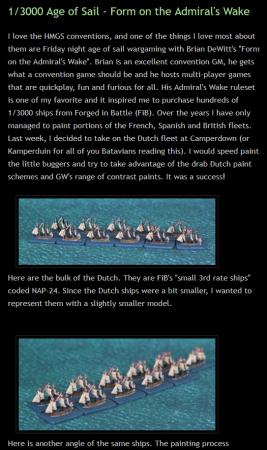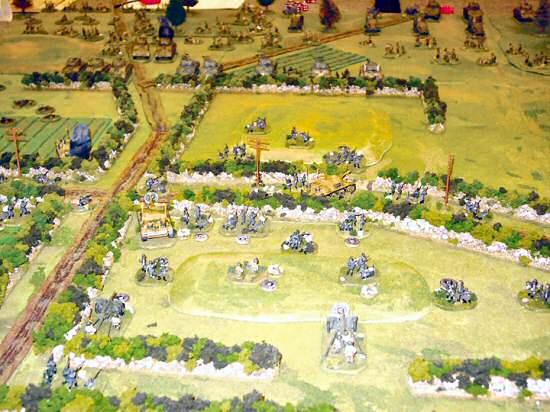
Volume 1 - Prussia, Britain, and Allies
96 pages. Illustrations, including 12 pages in color. Bibliography.
TABLE OF CONTENTS
Foreward
Historical Note
The Prussian Army
Cavalry
Infantry
Artillery
The Hanoverian Army
Cavalry
Infantry
Artillery
The British Army
Cavalry
Infantry
Artillery
The Army of Hesse-Cassel
Cavalry
Infantry
Artillery
The Army of Brunswick
Cavalry
Infantry
Artillery
The Army of Schaumberg-Lippe-Buckeburg
Bibliography
The Seven Years War in Europe has been James Woods' "consuming interest" for the past eighteen years. This concise reference work documents the organization and uniforms of the Prussian coalition in the Seven Years War.
Historical Note (p.7):
...it can be seen that, with the exceptions contained in this volume, Frederick II was at war with most of Europe.
First, let's clarify that this book is not a history of the Seven Years War. The one-page Historical Note explains how the war began, and that's it. (If you need a history book, look elsewhere...)
The rest of the book goes directly to the meat of the subject - the armies.

The format is to break the armies down into cavalry, infantry and artillery; and within each section, to discuss organization, provide a table of uniform information, then supplement the table with further text.
For example, the section about the British infantry tells us that a battalion contained over 1,000 men in nine companies, one of which was a grenadier company; and four battalions normally in a brigade. Equipment and standards are described.
The table divides the army into two contingents (presumably having something to do with their deployment). Looking up the 11th Foot, you find that it was in the Second Contingent, with green cuffs and lapels, green turnbacks, red breeches, brass buttons, "box" sleeve, and the grenadiers had green-and-white cap tufts.
The following text then gives a text description of the general uniform, including a sketch that illustrates the "box" lace decoration on the sleeve. Further uniform information is provided for officers, musicians, and engineers.
The British Army - Infantry (p. 66):Musicians
The musicians of the line regiments wore coats in the regimental facing colour, with red facings. Regimental lace was worn. The musicians of the "Royal" regiments wore red coats with blue facings. The lace was yellow with a blue stripe. Musicians of all regiments wore mitre caps. False sleeves were worn, with the top being the colour of the coat and the bottom being in the facing colour. Points-up chevrons were worn on the sleeves, and "swallow's nests" on the shoulders.
The wooden drums were hung from a lace-edged white strap. The front of the drum was in the facing colour, decorated with the regimental standard design, and the rims were painted red.
Note that this book assumes some familiarity with uniform terms of this era: turnbacks, busbys, shabraques, gaiters, cockades, cartouches, etc. (Mitre caps, however, are explained in the Prussian Army section.)
However, in addition to the help of a good dictionary, the relatively new student to this period will find the illustrations useful. A number of black-and-white reproductions of Knötel art are included, as well as 23 full-color illustrations from the Bob Marrion Collection (some are presented full-page, while others are combined three or four per page):

The color illustrations are:
- Unteroffizier Infantry Regiment von Finck 1757 (Prussia)
- Unteroffizier Hussar Regiment Szekely 1757 (Prussia)
- Officer - Dragoon Regiment von Schorlemer c1757 (Prussia)
- Foot Jaeger (Rifleman) c1760 (Prussia)
- Hussar, von Ruesch (5th Regiment) (Prussia)
- Cuirassier, von Rochow (8th Regiment) (Prussia)
- Musketeer, von Lehwaldt (14th Regiment) (Prussia)
- Freikorp Noble (Prussia)
- Dragoon, Breidenbach Regiment (Hanover)
- Horse Grenadier (Hanover)
- Musketeer Alt-Zastrow (Hanover)
- Grenadier von Scheither (Hanover)
- Cuirassier Regiment, von Miltitz (Hesse-Cassel)
- Musketeer, Mansbach Regiment (Hesse-Cassel)
- Leib Grenadier (Hesse-Cassel)
- Brunswick Hussar Grenadier (Brunswick)
- Officer, von Imhoff (Brunswick)
- Jäger, Jäger Korps (Brunswick)
- Musketeer, von Zastrow (Brunswick)
- The Royal Horse Guards c1760 (Great Britain)
- Grenadier 12th Foot (Suffolk Regiment) (Great Britain)
- Officer 23rd Foot, Royal Welch Fusiliers (Great Britain)
- Royal Artillery Gunner 1756 (Great Britain)
Reviewed by ![]() Editor in Chief Bill
Editor in Chief Bill ![]()
![]() .
.








